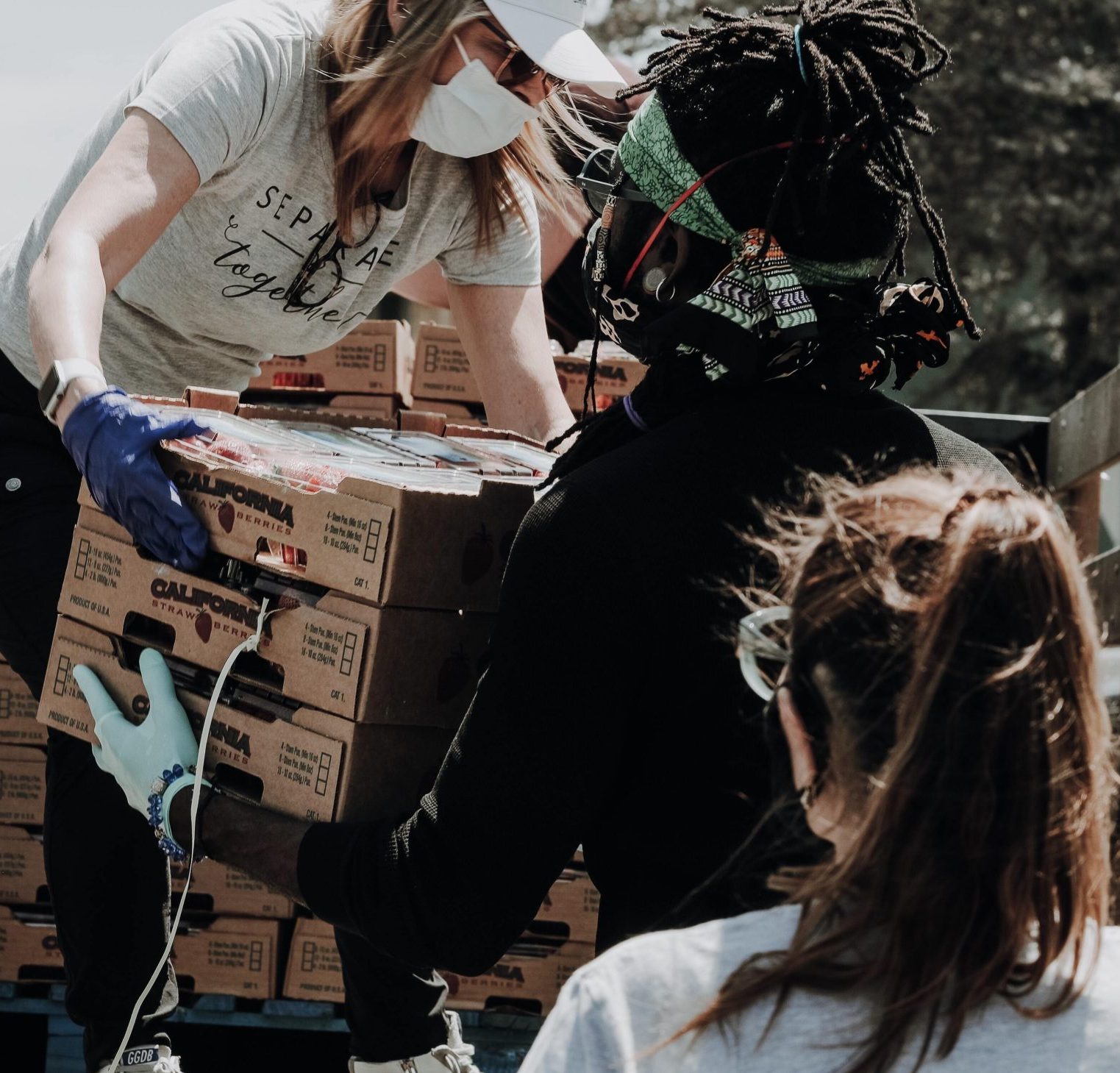This post was contributed by Andrea Dicks, President of Community Foundations of Canada, based on interview questions from Ontario Nonprofit Network. This blog was originally published by the ONN.
Nonprofit funders, including governmental, non-governmental, and donors, have an important role to play in supporting nonprofit and charities to provide decent work – they can be part of the solution rather than part of the problem.
- You spent formative years of your early career working in foundations and in the philanthropic community broadly. How did these early work experiences frame your understanding of decent work in the sector?
My career still feels ‘early!’ I have benefited from a few formative work experiences connected to the philanthropic sector—from small but mighty nonprofits, to corporate philanthropy, to start-up organizations.
At the beginning of my career, I worked at a children’s charity. I loved the work we did. There was a culture of work that I learned while there that was rooted in a shared commitment for the work but also included the expectation of long hours, event attendance and organizing on evenings and weekends. In one of the roles I held I was on call 24/7 should a family need to reach the organization. What became entrenched in me was a pattern and style of work that I learned to view as ‘normal’. It’s only recently that I’ve really begun to realize how this has followed me, and how it is not healthy.
After the children’s charity, I worked in corporate philanthropy at PwC. I spent the first few months in awe of the systems in place—a tech support team, a travel advisory system, a fitness allowance, etc. I was consistently surprised and delighted as to how the firm supported employees. That said, the culture of long hours was deeply entrenched there too.
There is a perception the public has of nonprofits: that we must be extremely savvy with expenditures and therefore never invest money in ourselves—our team, equipment, space, etc. You hear it in the comments centred around ‘overhead’ or ‘operating expenses’. And yet, it’s the team members at non-profits who are doing and enabling the work that is so critical to community and social infrastructure. This is a tension we need to address.
Now, here at Community Foundations of Canada (CFC), I know that the patterns I learned early continue to be part of how I operate. More clearly said, I know that I perpetuate unsustainable work practices. I’m working on shifting this pattern—both for me, but also so my team witnesses a better example and balance. Admittedly, I still work long hours because I love my job, but now I am careful to balance that with lieu time, holidays, etc.
The sector needs leaders to flip the orthodoxy of overworked, underpaid, not taking care of yourself bravado. The focus and language of decent work has helped me to personally recognize that it’s not just about what I value in concept and practice, but how I demonstrate it for others.
- Why should the community foundation network care about advancing decent work, and specifically advancing decent work for women workers?
Data demonstrates that gender inequality is the greatest human rights violation that exists in the world. A place where gender inequality shows itself consistently is in the workplace. With this knowledge, we have the opportunity and responsibility to change this trajectory, and the work experience for all. There is tremendous urgency related to this need to change. I think about people who have jobs that have long or complex commutes, those who make minimum wage, those who have their personal safety threatened in public because of where they work, and those who lost a job because of COVID-19. Within philanthropy, we have a tremendous opportunity to take action when it comes to decent work and how it intersects with gender equality. Unfortunately, there are some who do not embed decent work in a manner that reflects the urgency of the situation. Many funders, in the current context, operate in an environment where time is unlimited. Time is a currency of power. When we take time, without acknowledging that power and privilege allow us to do so, we are not shifting or sharing power. We are monopolizing it. This endless time and lack of urgency creates a culture of questioning legitimate data, going on learning journeys, reflecting and consulting. We take our time to be strategic, write thought papers, host generative discussions, and in the end mostly move incrementally. Community foundations in Canada have 100 years of experience that demonstrate how this approach is not creating the systemic change we are seeking. Taking a look in the mirror and changing how we work, embedding decent work practices, is a shift we can collectively make now.
Decent work is a gender equity and racial justice issue
- As a gender equity champion, you have stated how complex social issues intersect, that climate change is about gender equity and racial justice, for example. What do you take away from the following message “women’s economic justice means investing in women-majority sectors”?
In principle, I agree. However, in Canada we often hold the belief and posture that we have it good, especially when it comes to gender equality. But if you look at the data—and listen to women and gender-diverse people—then you will know that is not entirely true.
As funders, as humans, we have a collective responsibility to ensure that all women have access to safe, fair and flexible employment—whether re-entering the workforce, returning to the office, or getting started in their career.
When we use an intersectional analysis, we’re able to better understand where the experiences of many differ from what the common belief tends to be. For example, we know that a woman living in a rural community, with unstable employment, without access to transportation, will have a different experience obtaining food security for their family than a woman living in an urban setting with access to public transit and who is in a stable economic situation. Looking at economic justice and gender, we can see how Black, Indigenous and women of colour have been negatively impacted the greatest during the pandemic. The care sector, hospitality and service sectors, have all taken the greatest job losses and often have the most precarious employment, for a majority BIPOC-women demographic.
This is why the advocacy of organizations like the Ontario Nonprofit Network matters so significantly. To use ONN’s language, by funding women-led and women-serving organizations, we can deliver double the impact. We can support decent work for women-identifying staff at those nonprofits and support the programming that serves women, girls, Two-Spirit people and gender-diverse people.
However, we can also go back to the framing of this question and draw attention to sectors that are not women-majority. I believe it’s equally important to ensure that we are creating a system in which women are part of the sectors that are presently male-dominated. For example, where wealth comes from, who is making the investment decisions—this also needs to shift. The predominantly male demographic of angel investors, mostly invests in male entrepreneurs. Women need access to capital and to have agency to decide how it is (re)distributed, as well as be the recipients of it. The whole system requires a flip.
Community foundations as grantmakers
- We’ve heard loud and clear from the sector that they can’t implement decent work alone, they are only going to get so far and so need the support of funders, like community foundations. Community foundations play a variety of roles – they are employers, grant-makers, as well as leaders in their communities. However, with great responsibility, comes great power. What would you say the community foundations network has done really well to advance decent work, and what can it do better?
Over the last year, one of the themes that has become an integral part of our conversations at CFC is that of language. Personally, I have become quite interested in how language evolves, and how much language, and the nuance of it, matters. At CFC, we’ve been leaning into deep thinking about what language infers: what actions it signals, who it includes, what urgency it conveys, what it leaves unsaid.
So, I want to comment on the language the sector uses— how the sector positions itself. This is one area of improvement. If we take the example of student workplace internships, we see that for-profit organizations promote student placements with descriptive language such as “Designed for students to have countless opportunities to learn, grow, and work with purpose across multiple environments and technologies”. Or, ”Develop new skills, establish contacts in your field of study and boost your career possibilities”. Whereas nonprofit workplace internship language often centres more words that infer scarcity. For example, “a placement explicitly designed to boost the capacity of the not-for-profit organization.”
The nonprofit sector is not lesser than. The nonprofit sector is run by professionals. I’m hopeful community foundations in their broad reach, will support decent work practices internally and throughout their network, such as grantees. For example, there are some community foundations who use Vital Signs to understand what a living wage is in their community. They then take it a step farther and ask their grant recipients if they are paying their employees a living wage—and if they are not, the community foundation provides funding to do so. So, they are requiring that organizations step up, and do so in an enabling way. This is a great model and I’m hopeful more community foundations lean into practices such as this.
Here at CFC, we’re also requiring adaptations by community foundations when participating in specific programs. As an example, through the Communities for Gender Equality program, we require participating community foundations to live the values of the initiative from the inside out, by committing to their own institutional change. This comes to life through implementing gender lens investing practices, reviewing their governance and HR policies and practices, and conducting equity audits of their programming. The first cohort of participants is stepping up and doing incredible work in their community and in their own institution.
- CFC was a signatory to a joint statement early in the pandemic that called for increased funding and flexibility. How do you think this message resonated and do you think it should be a short-term pandemic response or a longer-term solution? How do you think this more flexible approach might contribute to funding decent work practices?
Evidence from the community foundation network shows that it did resonate. Most community foundations were able to pivot to crisis funding that was much more flexible. The longer-term solution is trust-based philanthropy. Beyond single events, we need to embed the values we purport to have into our processes and policies. We witnessed a lot of leaning into trust and feminist philanthropy during the pandemic—in particular at its onset. There’s also been a shift to more inclusive grantmaking practices, for example, verbal applications. The optimist in me believes we’re in a moment of transformation. The conversations people are having about experiments, pilot programs, unrestricted granting, multi-year funding, operational funding, donor education—they are all good signs. The path forward is brightly lit.
But we also know that the process can catch us up and slow us down. The world has fundamentally changed, our communities have changed. Our practices must change too—and at a pace that is aligned with the urgency in community. Personally, I’d like to see community foundations lean into the principles in the statement further—the pandemic has proven that we have the ability to shift quickly and to change our practices based on what the community needs. We now have the opportunity to make permanent the practices that shift power, decolonize philanthropy, and embed equity.
Community foundations as an employer
- As President, how do you walk the talk? What do you struggle with related to developing a culture of decent work? What are you most proud of?
My hope is that both CFC and I are continuously interacting and making decisions about the team and our workplace with the best interests of the organization and its people at the centre. I very much believe that CFC’s strength comes from the amazing people who are part of our team. Despite the obvious challenges, our team has been strong over the last year and a half. I’m proud to work alongside this crew of incredible humans who not only do good work, but who show up for one another, for their friends and families, for our network, and for communities. This last year and a half the CFC team, more than ever before, brought their whole hearts into CFC—from kitchen tables, living room couches, balconies, and basement offices. We celebrated with one another: successes in programs, babies, and moves across the country. We held space for one another on tough days: when a loved one was lost, a heart was broken, or the fatigue of the continued pandemic has felt too heavy. We’ve shared Netflix recommendations and passwords, where to buy toilet paper, workouts, books that bring us joy, zoom dance parties, vaccine location appointments, virtual coffee, pizza and even ice cream. Our team has also held true to our purpose in many ways; these last 18 months they have stood up for, and held CFC to account, for the future we are all working toward—one that is equal, just and sustainable. I’m personally grateful to each of them for showing up as they do—with questions, ideas, insights and opportunities. It’s clear to me that at CFC, our greatest super power has always been our staff team.
My hope is that we are creating a workplace where each team member is supported with kindness on the days that are bright as well as on those days that have darkness. And I think it’s important to be open about the days and moments that are hard.
Personally, I struggle with the concept of ‘it’s ok to not be ok’. I feel a tension with it because in one way, I wholeheartedly agree. I want our team and network to know this, believe it, and live it. I want them to know that I will support them, champion them, or simply listen to them, on the days when they are not ok. Where the tension exists is how this concept relates to me: how I approach the days when I’m not ok. And in truth, I know I don’t approach them as well. I don’t model the idea that it’s ok to not be ok—I don’t give myself the grace to feel it. In part, because if one crack begins, I’m uncertain how many more will follow. This year, it has often felt like I’ve simply been moving the glue to different cracks as they emerge. I know this is a space for me to improve, to become better at being gentle with myself.
Community foundations as community leaders
- Collaboration is the key to movement building as well as systems change. How can funders and grantees work together to ensure we build a stronger movement for decent work, gender equality and racial justice in our sector? How can your network lead the way for other funders?
My experience is that we (the collective nonprofit) are most comfortable with conversations and actions that can be categorized (broadly) as ‘optimization’. Optimization is the act of making the best or most effective use of a situation or resource. There are moments where this can be good. What we’ve been thinking about at CFC is this: what if instead of striving for optimization, we aspire for transformation? Transformation is the act or process of changing completely. This is relevant to the work of philanthropy, and in how we do this work—especially to the work cultures and environments we are fostering.
In philanthropy, I think we often speak about shifts or changes as if they are transformation… but really, we’re playing it safe with changes that are about optimization. There was an article in the New York Times about COVID-19, which stated: “It is easier to keep adding exceptions and justifications to a belief—than to admit that a challenger has a better explanation.” I believe this also has relevance for the solutions and methodologies we utilize in philanthropy. That often it’s easier to keep jiggling or modifying an existing “solution” than to admit that there are better solutions being offered by others. This is part of our conversations internally—about the work we are doing as well as the organization we are today and will be in the future. Saying it is easy, putting it into practice is a radical act. I believe that we’re up for it.
Part of this is also being clear when we’ve gotten it wrong. As one example, The Nonprofit Coalition launched with the leadership of a number of organizations that work nationally, many of whom represent the reality of a white-led sector. We should not have participated in a process itself that perpetuated some of the very issues we are hoping to address through our work. This was a mistake and led to our own reflections, as an organization and for myself as a leader, to take steps to change how and where we show up, and only agreeing to participate in and build coalitions, consortiums and collaboratives where diverse leaders are present in all activities and decision making. While the Coalition acknowledged the lack of diversity, at CFC we believed it was important to do and say more. We took steps to acknowledge our mistake publicly in order to be transparent about our mistake, and to also encourage others to hold us accountable.




